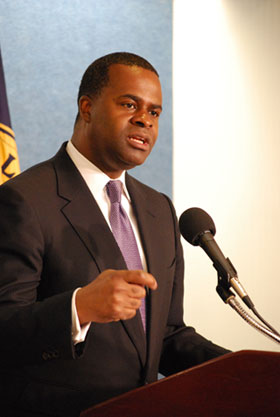Transportation for America responds to House T&I authorization proposal
Crossposted from Transportation for America.
WASHINGTON, DC – Today, House Transportation and Infrastructure committee chairman John Mica (R-FL) released an outline of principles for a proposed six-year transportation bill. The $230 billion, six-year proposal represents a 35 percent spending reduction with potentially significant impacts on road and bridge repair and maintenance, as well as public transportation and safer walking and bicycling. James Corless, director of Transportation for America, had this to say in response to the Chairman’s proposal on state flexibility, transit funding and streamlining project delivery:
“We commend Chairman Mica and his fellow drafters on the push to get this long-stalled bill moving, and we appreciate the effort to consolidate programs, leverage non-federal resources and deliver projects more quickly. However, we are skeptical that investments at this level can meet the country’s infrastructure needs.
 By 2015, more than
By 2015, more than 



